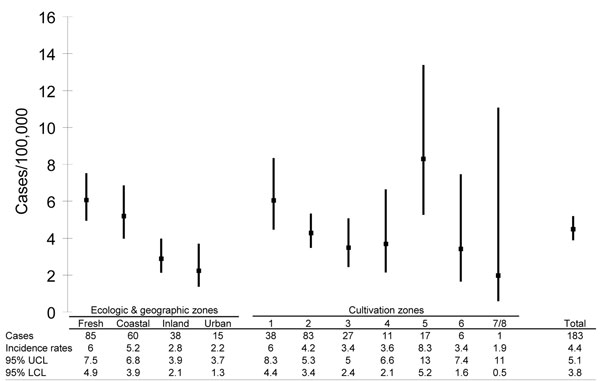Volume 14, Number 4—April 2008
Dispatch
Mycobacterium avium Lymphadenopathy among Children, Sweden
Figure 2

Figure 2. Number of cases, incidence rates (cases/100,000 children/year), and 95% confidence intervals of Mycobacterium avium disease in children grouped according to ecologic, geographic, and cultivation zones, Sweden, 1998–2003. Freshwater, coastal (incidence of saltwater and brackish water were similar within this group), inland, urban (Stockholm, Göteborg, and Malmö, the 3 largest cities in Sweden) areas and the different cultivation zones (1–8, zone 1 being the warmest) are depicted. When assigning zones to each case, we assumed that the children were infected in the area where they resided. UCL, upper confidence limit; LCL, lower confidence limit.
Page created: July 09, 2010
Page updated: July 09, 2010
Page reviewed: July 09, 2010
The conclusions, findings, and opinions expressed by authors contributing to this journal do not necessarily reflect the official position of the U.S. Department of Health and Human Services, the Public Health Service, the Centers for Disease Control and Prevention, or the authors' affiliated institutions. Use of trade names is for identification only and does not imply endorsement by any of the groups named above.